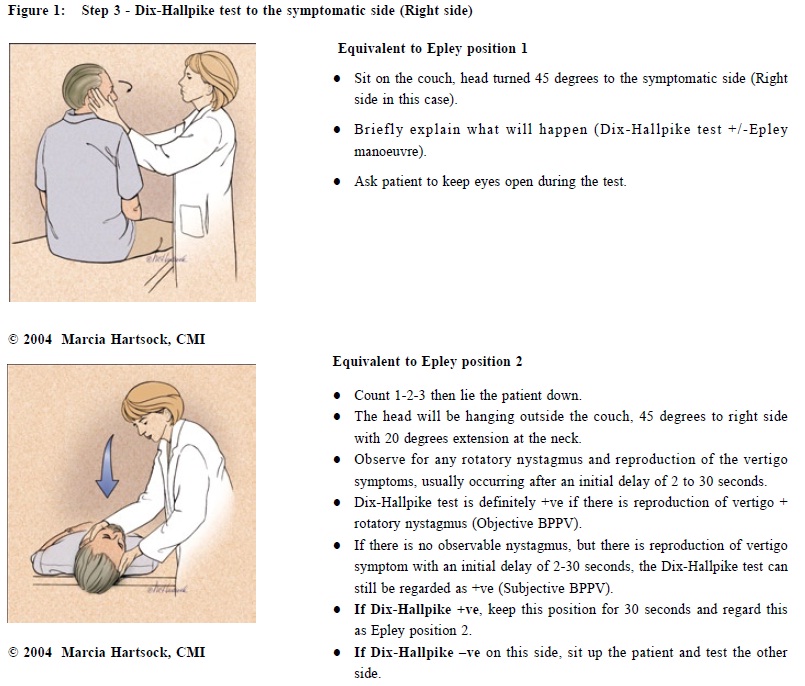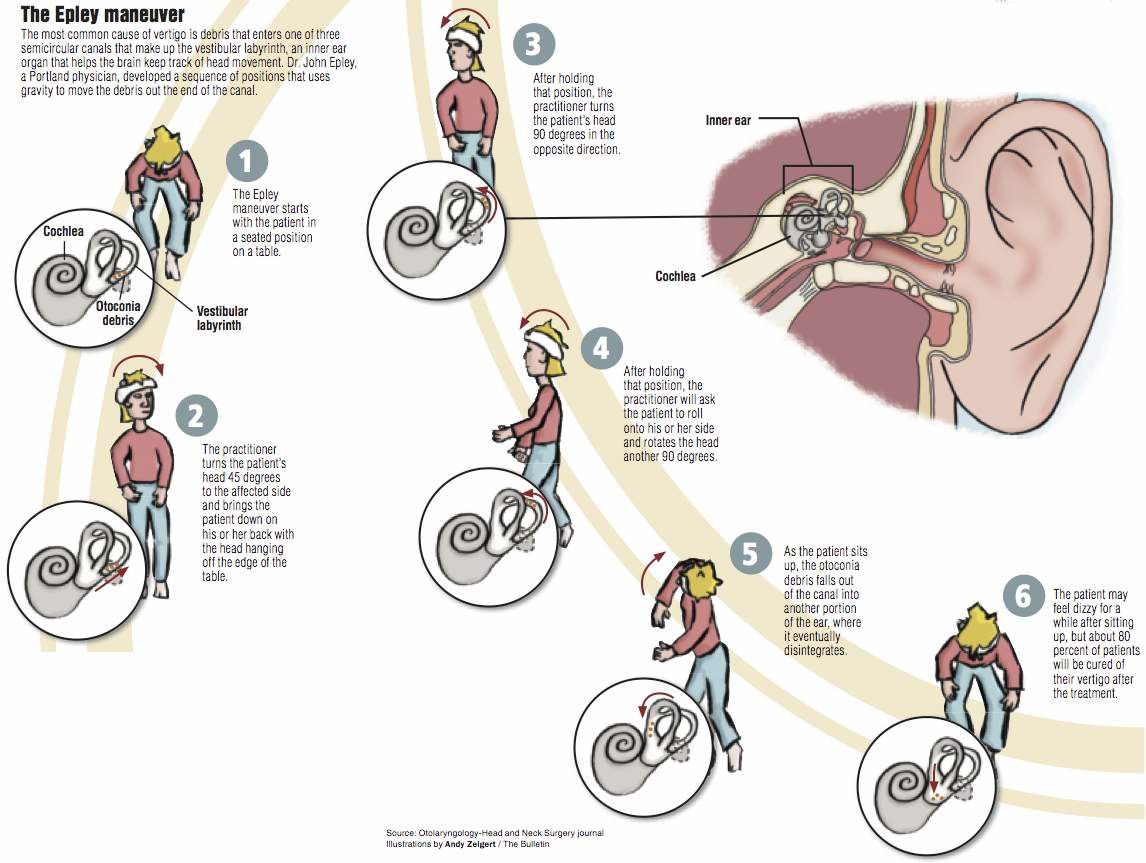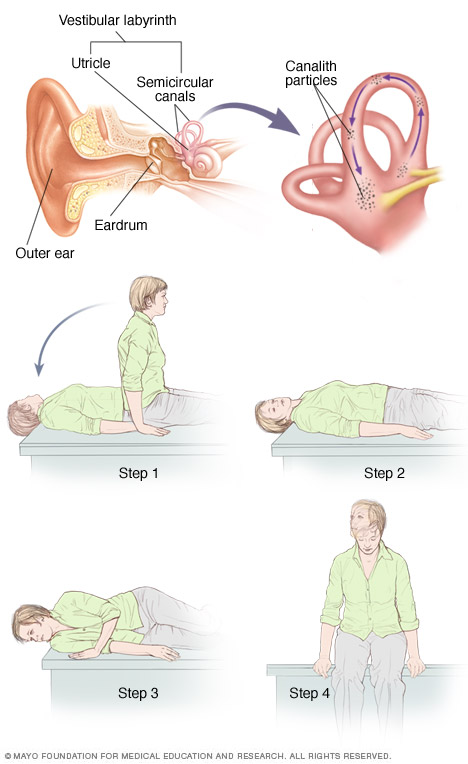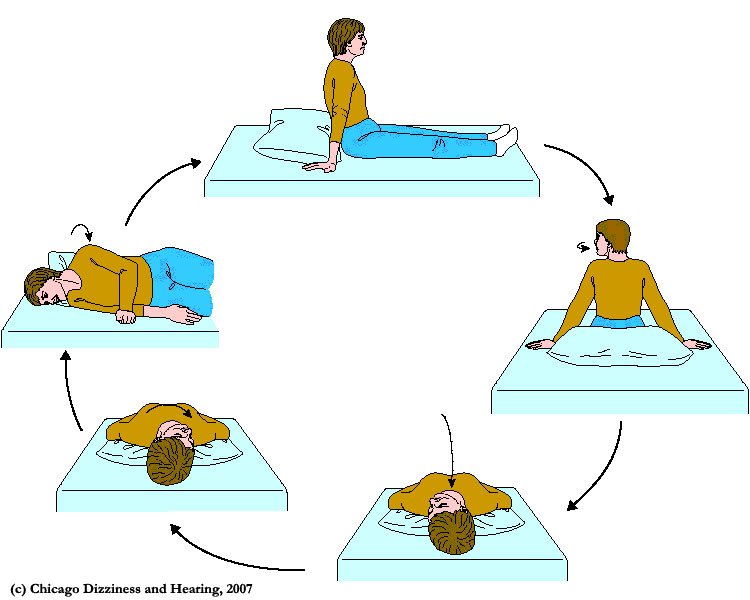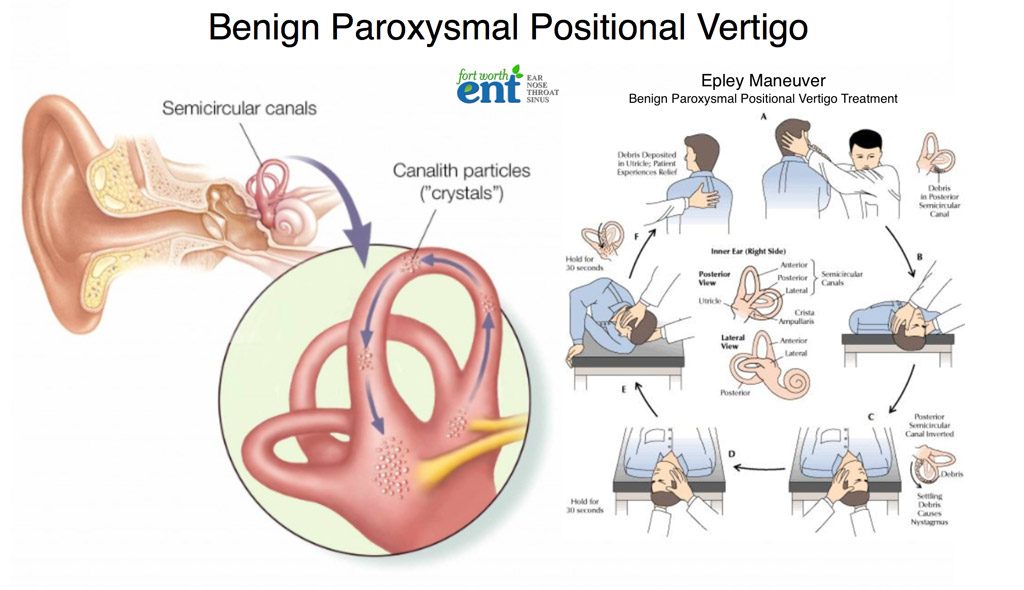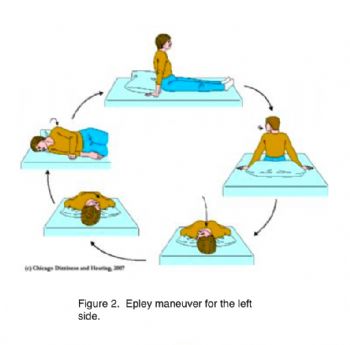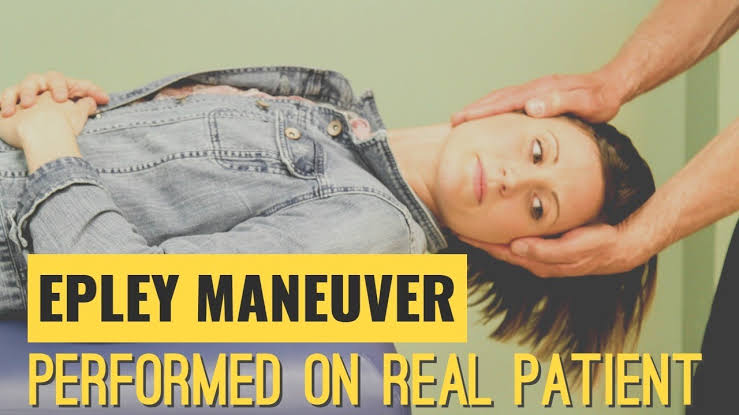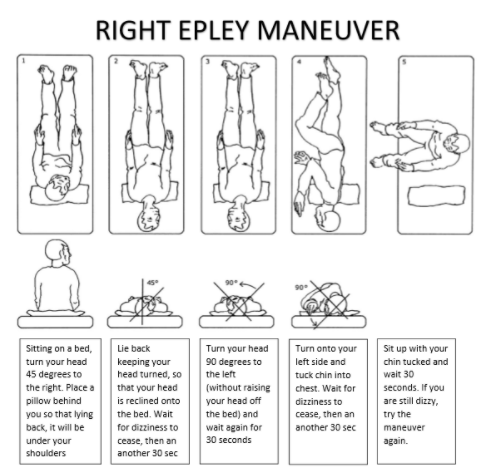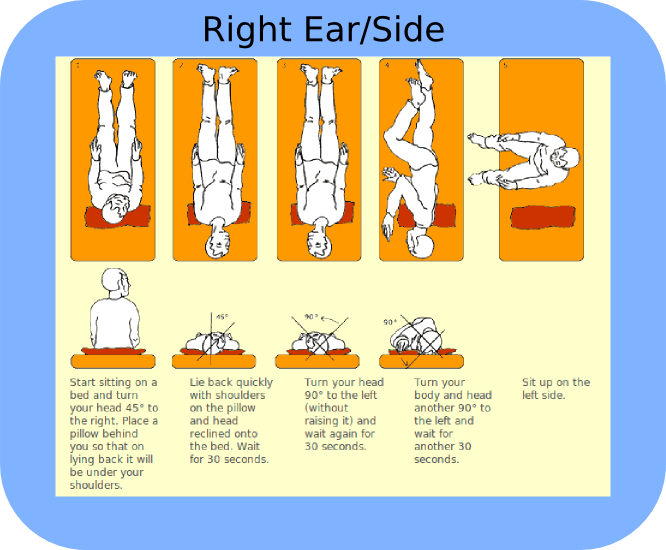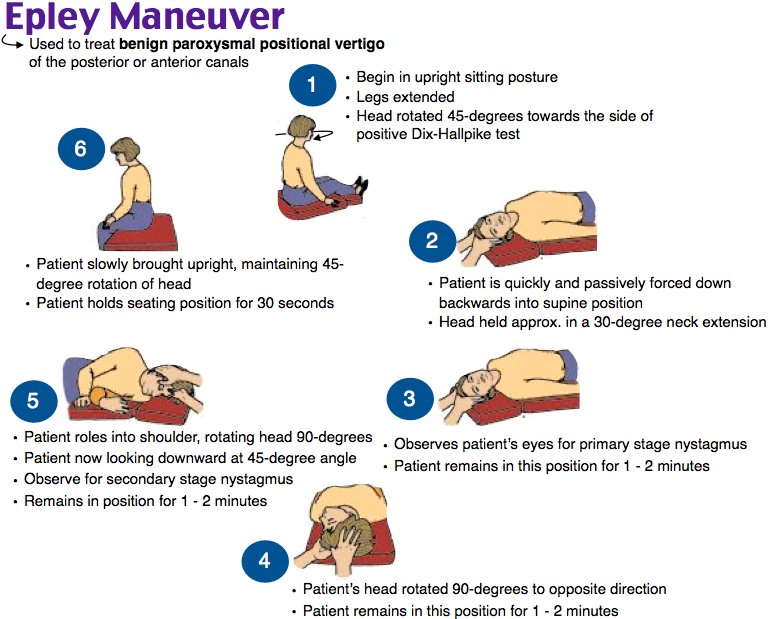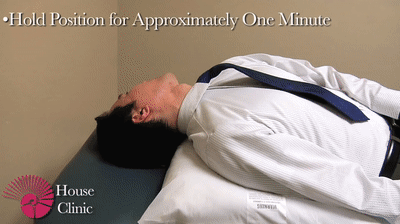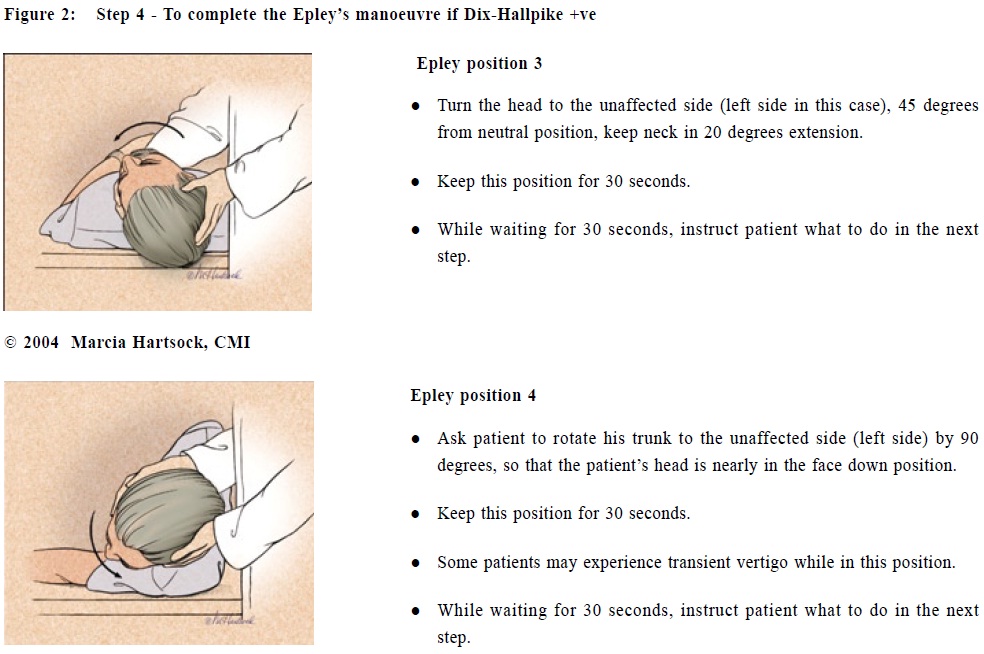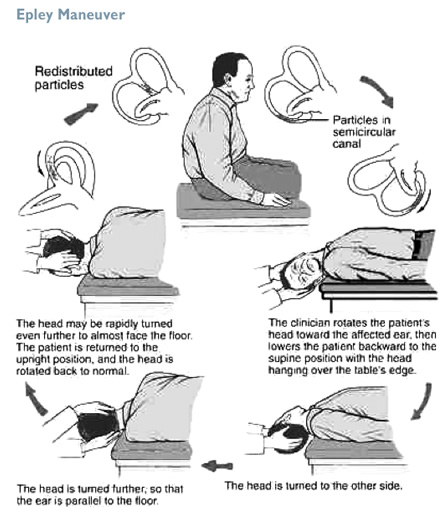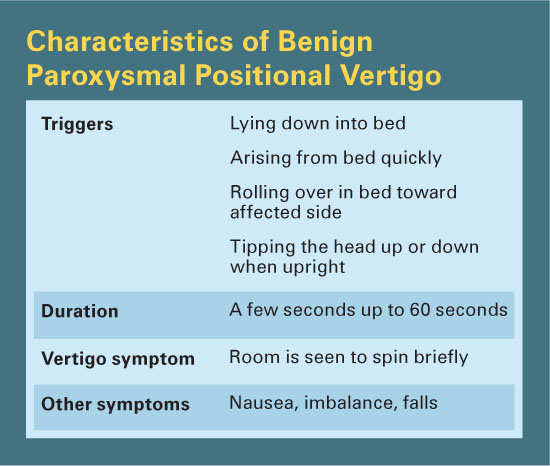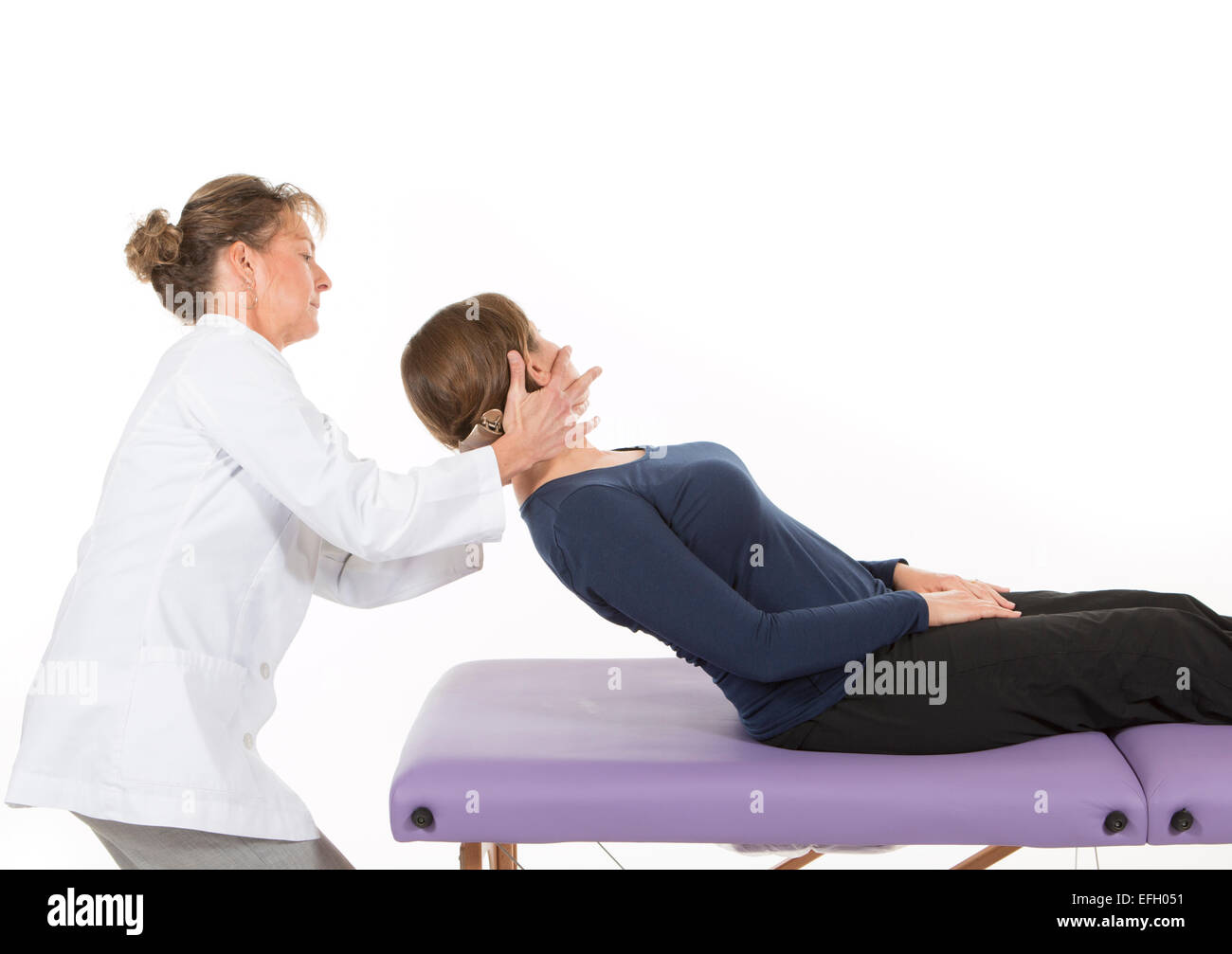Epley Maneuver Which Side
Steps for epley maneuver step 1.
Epley maneuver which side. After the epley maneuver. Epley maneuver if your vertigo comes from your left ear and side. This is a great technique to use for benign paroxysmal positional vertigo. It works by allowing free floating particles from the affected semicircular canal to be relocated using gravity back into the utricle where they can no longer stimulate the cupula therefore relieving the patient of bothersome vertigo.
Slowly sit up but remain on the bed a few minutes. Turn your head 45 degrees to the left not as far as your left shoulder. This video demonstrated the technique for right side. Turn your head to the right 90 degrees until its facing 45 degrees.
Less commonly the condition is bilateral involving both ears and requires you to use the technique on both sides. Lie down keeping your head turned to the left. Use this video to guide you through the epley maneuver at home. Turn your head and body on its side to the right so youre looking at the floor.
If the exercise was performed in your doctors office you would need somebody to drive you home as you may still feel a bit dizzy from the incident. Because bppv typically involves one ear 5 the epley maneuver needs only to be performed on the affected side. You can do this exercise at home. This maneuver was developed by dr.
It is highly risky to self drive due to the possibility of recurrence. The epley maneuver or repositioning maneuver is a maneuver used by medical professionals to treat one common cause of vertigo benign paroxysmal positional vertigo bppv of the posterior or anterior canals of the ear. Sit on the edge of your bed. Famous physical therapists bob schrupp and brad heineck bob and brad first demonstrate how to determine which epley maneuver needs to be done right vers.
Finally sit up on the right side. Check with your ph. Start sitting up on a bed with your legs flat on the bed in front of you. Bppv is caused by a problem in your inner ear.
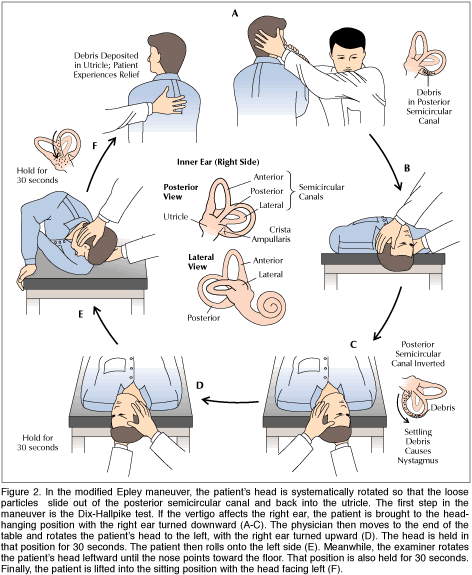





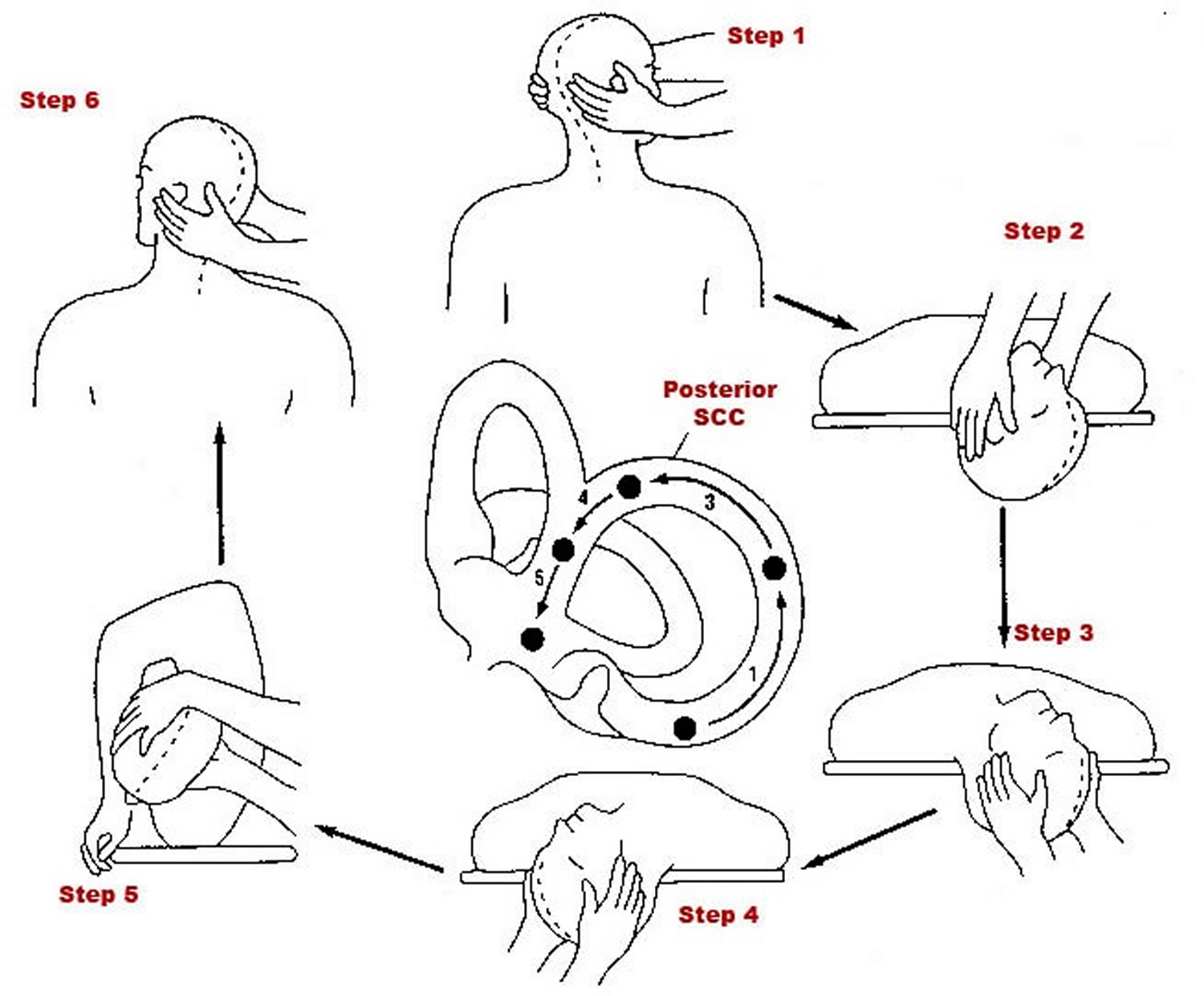
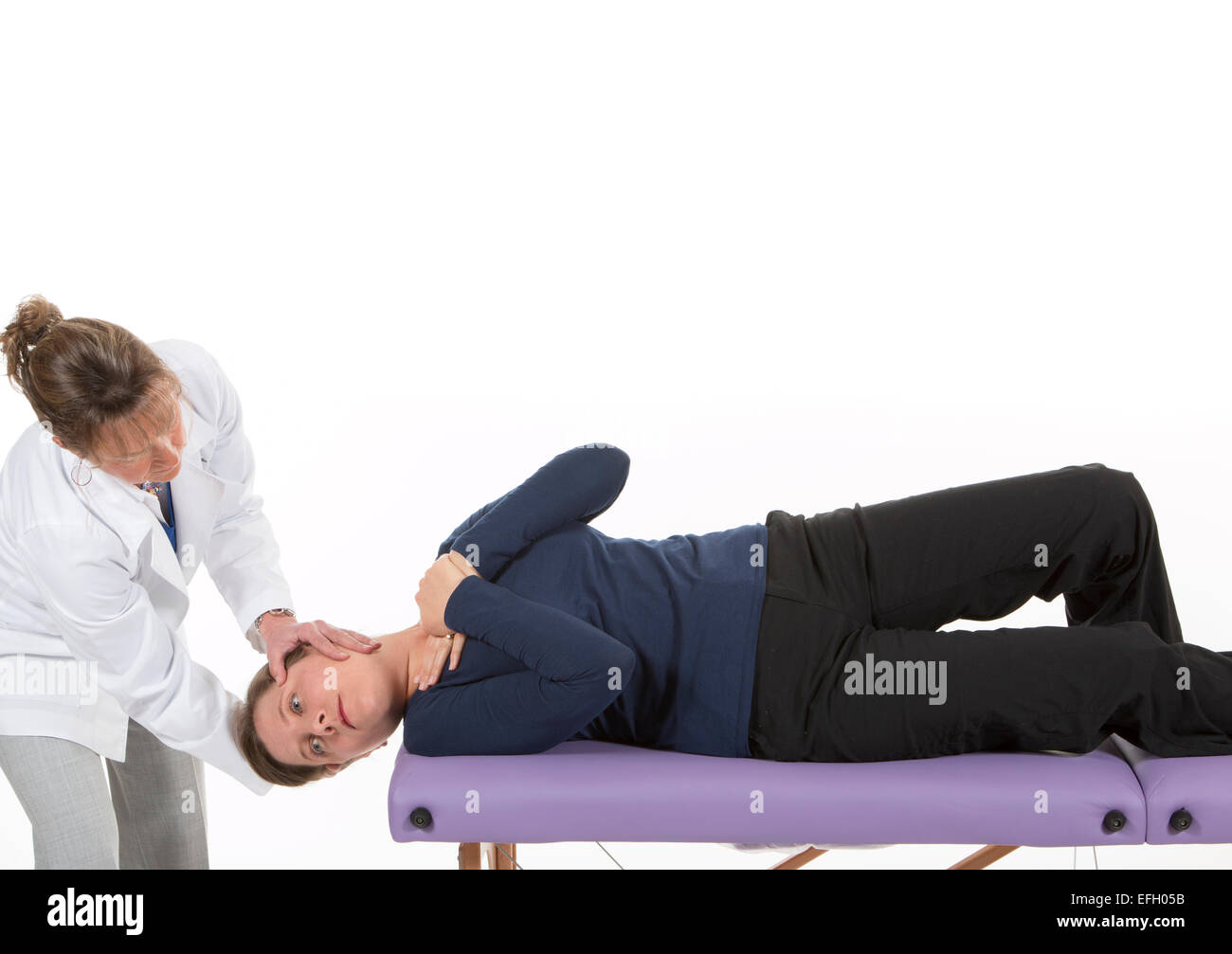



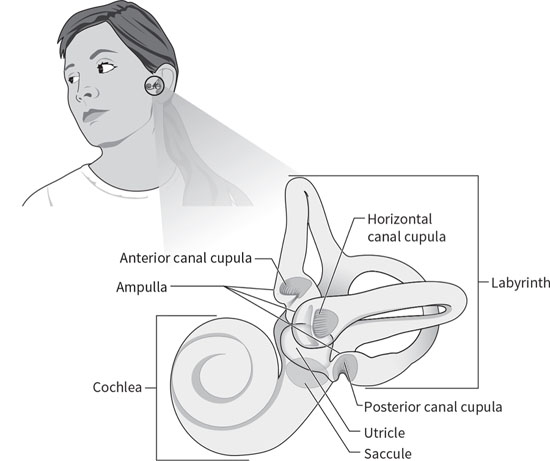







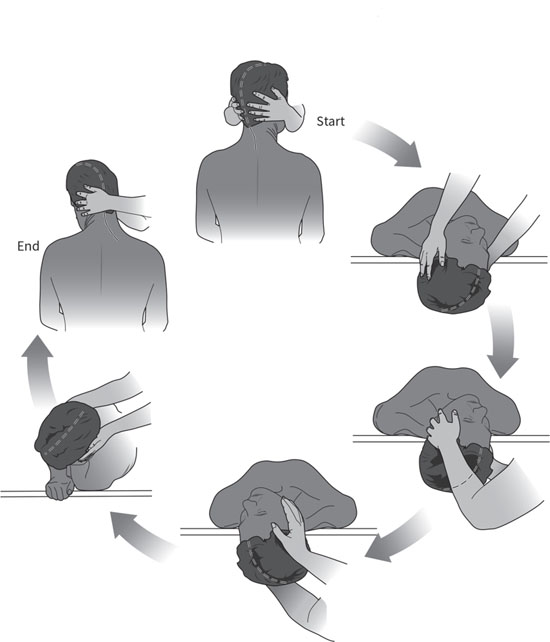
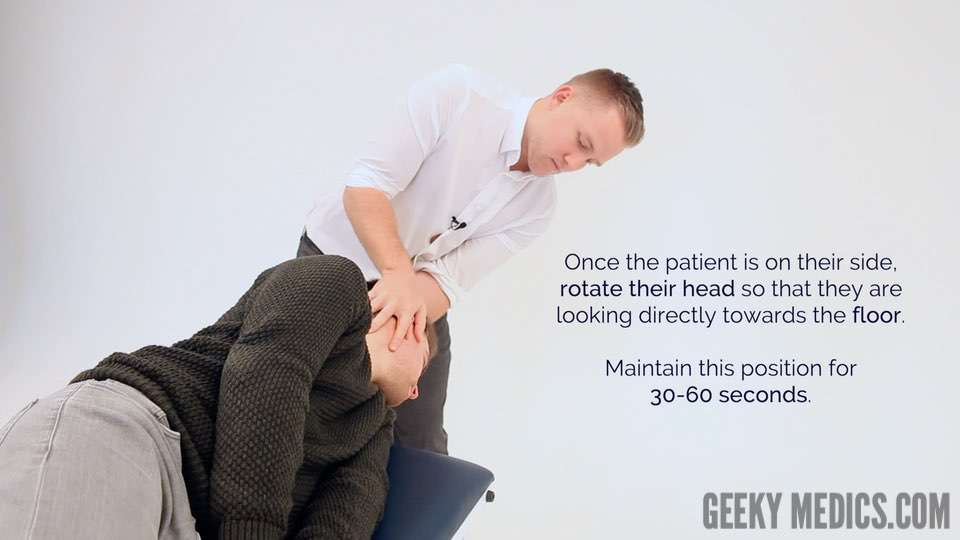
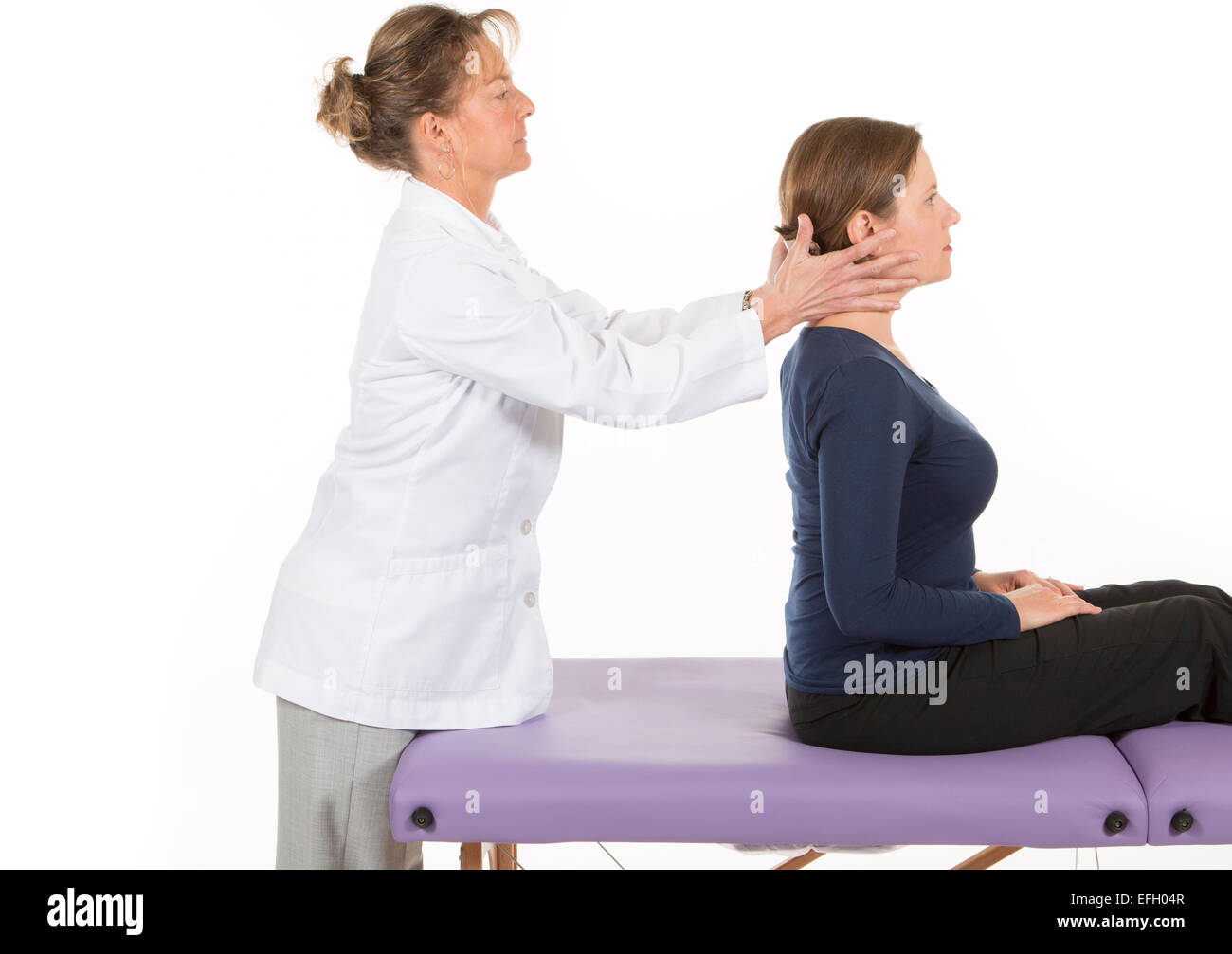
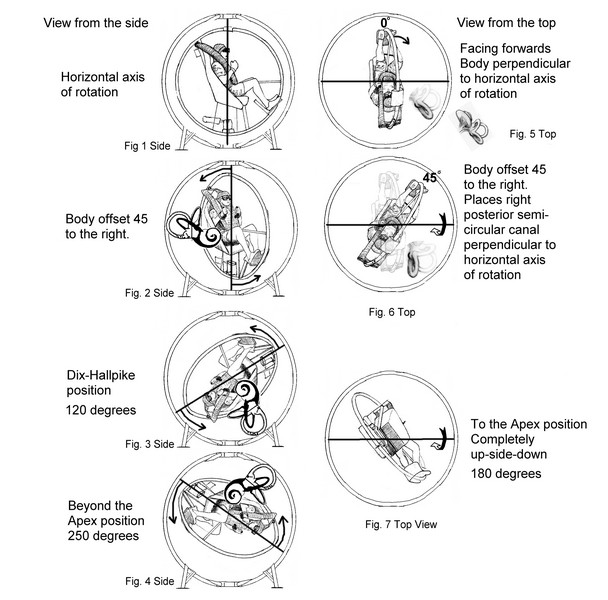

.jpg)



